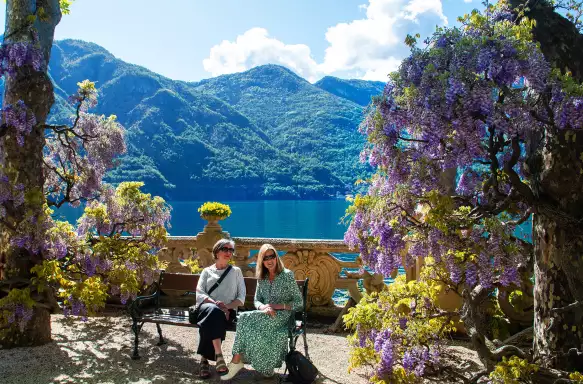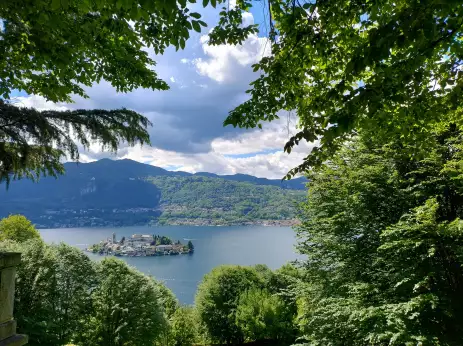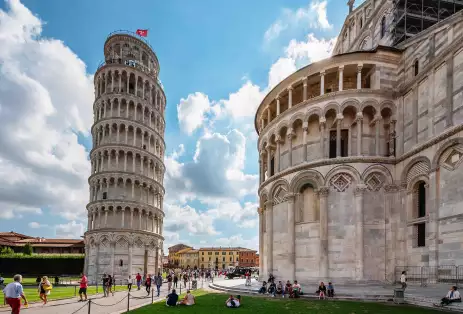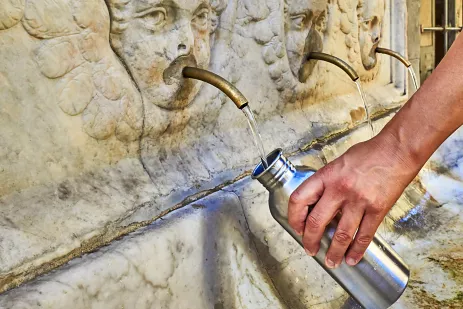Visiting Italy: Culture, Etiquette, Currency and More Travel Tips

Italy is one of the world’s most popular travel destinations - rich in history, culture, and culinary treasures. Whether you're dreaming of sipping espresso in a sun-drenched piazza or getting lost in ancient Roman ruins, a little preparation can make your Italian adventure all the more rewarding. From everyday etiquette to regional quirks, this guide covers essential travel tips to help you feel confident, respectful, and ready to enjoy la dolce vita.
Do you need a visa for Italy from the UK?
For UK citizens, Italy is part of the Schengen Area (a passport-free zone within Europe where 29 countries have abolished border controls between each other). You can visit for up to 90 days in any 180-day period without a visa. Your passport must be:
- Valid for at least 3 months after your planned departure date
- Issued less than 10 years before the date you enter the Schengen Area
It's always best to double-check requirements on the UK Government travel advice page before you go.
What is Italy’s time zone?
If you're planning to phone home during your trip, or worried about jet lag, it's useful to know what time zone Italy is in. Italy follows Central European Time (CET), which is 1 hour ahead of the UK during standard time. So if it's noon in London, it's 1pm in Rome. (And no, Italy doesn't have multiple time zones - the entire country follows the same time, from Milan to Palermo.)

Cultural etiquette in Italy
Italians are known for their warmth, passion, and expressive communication style. When navigating social situations remember:
- A friendly buongiorno (good morning) or buonasera (good evening) goes a long way. Even among acquaintances, it’s also common to exchange a light kiss on both cheeks or a handshake in more formal contexts. Did you know that Italians always start the kiss on the left (the receiver's right cheek) to avoid any awkward situations?
- Italians tend to stand closer during conversation than you might be used to in the UK, and they often touch your arm or shoulder when speaking - it's a sign of friendliness, not intrusion.
- In formal settings, addressing someone as Signore (Mr.) or Signora (Mrs.) shows courtesy. Italians also take great pride in academic and professional accomplishments so if someone has a professional title (like Dottore or Professore), use it!
- Cappuccinos, and other milky coffees, are strictly a breakfast drink - ordering one after 11 am will likely raise a few eyebrows. Consider instead, a Caffè Macchiato (espresso with a small amount of hot milk) if you don't want to stand out as a tourist.
- Pay attention to opening hours. Pranzo (lunch) is usually served between 12:30–2:30pm and cena (dinner) from 7:30pm onwards. Many restaurants close between meals, so if you want to eat between these times, you might find it difficult in quieter towns. And many businesses (especially more rural, family-run ones) close on Sundays or during siesta hours (typically 1–4pm).
Useful Italian phrases for travellers
Some Italians speak a little English, especially in tourist areas, but don’t rely on it. Even a few basic words can go a long way in Italy, especially outside of major tourist hotspots. Italians appreciate visitors who make an effort, and you’ll likely be met with warmer smiles (and better service).
- Ciao (chah-oh) - Hello/Goodbye (informal)
- Buongiorno (bwohn-johr-noh) - Good morning. Used until lunchtime.
- Buon pomeriggio (bwon po-meh-reej-joh) - Good afternoon. Used from 2 PM to 5 PM.
- Buonasera (bwoh-nah-seh-rah) - Good evening. Used from 2-3pm until late
- Buonanotte (bwoh-nah-noht-teh) - Good night
- Per favore (pehr fah-voh-reh) - Please
- Grazie (grah-tsee-eh) – Thank you
- Prego (preh-goh) – You’re welcome
- Scusa (skooh-zah) – I’m sorry/Excuse me
- Permesso! (Per-meh-soh) - Can I move past you?/ Can I come in?
- Parla inglese? (pahr-lah een-gleh-zeh) – Do you speak English?
- Predo.. (Pren-doh) - I'll have...
- Quanto costa? (kwahn-toh koe-stah) - How much does it cost
- Dov’è il bagno? (doh-VAY eel BA-nyoh) - Where is the bathroom?

What to wear in Italy?
Italians are famously stylish, and while no one expects you to walk around in designer labels, neat, tidy dress is appreciated. In churches, modest attire is a must - cover shoulders and knees, and avoid hats. Many churches, including St. Peter’s Basilica, will refuse entry if you're not dressed appropriately. If you're off to the beach, don’t walk around town in a bikini or shirtless, even in coastal areas - swimwear is for the beach only.
What is the currency in Italy?
Italy has used the euro since 1999. You’ll find ATMs in cities, towns, and airports, and most restaurants and shops accept credit and debit cards. However, it’s a good idea to carry some cash - especially for small purchases, rural areas, or market stalls where cards might not be accepted. Avoid the currency exchange desk at the airport, which often has poor rates, and make sure you stock up before you leave.
How much should you tip in Italy?
Tipping in Italy is appreciated but not expected. Coperto (service charges) are often included in your restaurant bill, especially in tourist areas.
Here’s a general guide:
- In restaurants, leave small change or round up to the nearest €5 or €10. If the service was exceptional, 5–10% is generous.
- In cafés, it's not necessary however locals sometimes leave small coins.
- Round up the fare in taxis, if you want to leave a tip,
- In Hotels, €1–2 for bellhops or housekeeping staff is a nice gesture.

Can you drink tap water in Italy?
Yes - tap water in Italy is safe to drink, and often of excellent quality. In fact, we recommend our guests bring a refillable water bottle on our tours to Italy, especially in cities like Rome and Florence where you'll find nasoni (public water fountains) where you can refill bottles for free.
Look for the sign "Acqua Potabile" (drinkable water).
Getting around Italy
Italy’s public transport is generally efficient and well-connected. Here are our top tips for getting around Italy:
- Trains are ideal for travel between major cities like Rome, Florence, Venice, and Milan. Consider booking in advance for cheaper fares, especially on high-speed trains (Trenitalia or Italo).
- Make use of buses and trams in towns and cities. But be aware: tickets must be bought in advance (at newsstands or kiosks) and validated when boarding.
- If you want to explore the countryside, care hire is a great idea. Hill towns, and rural areas - like parts of Sicily and Tuscany - have limited public transport.
- However, if you are driving, be aware of ZTL zones (Zona a Traffico Limitato) - these are restricted traffic areas in many Italian cities. Driving into one without permission can result in hefty fines.
Don't fancy working it all out for yourself? Check out our tours to Italy where we'll arrange all transport for you.
